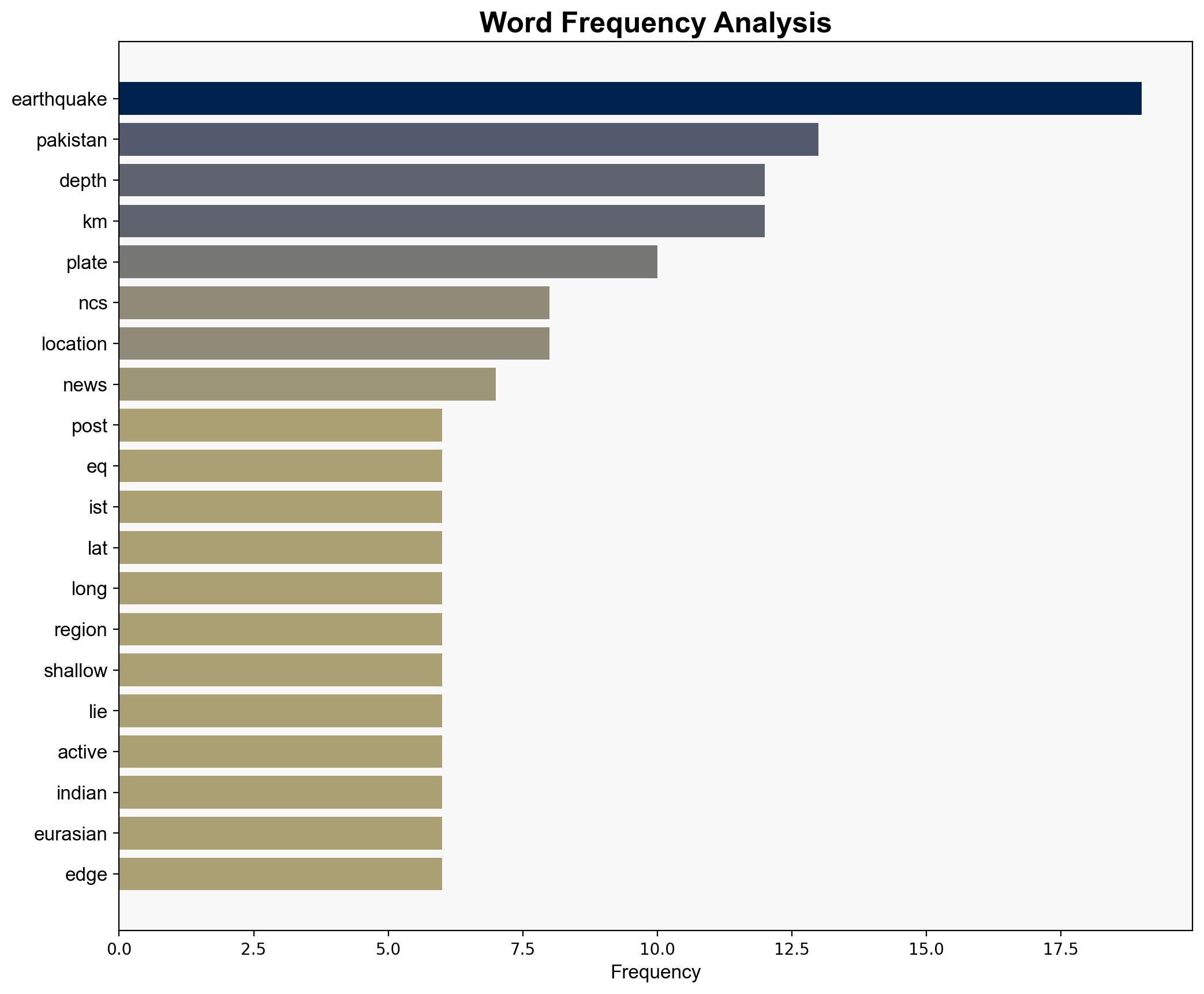Earthquake of magnitude 43 strikes Pakistan – The Times of India
Published on: 2025-11-06
Intelligence Report: Earthquake of Magnitude 4.3 Strikes Pakistan – The Times of India
1. BLUF (Bottom Line Up Front)
The earthquake reported as magnitude 4.3 in Pakistan is likely a moderate seismic event with potential for localized damage and aftershocks. The most supported hypothesis is that this event is part of the region’s ongoing seismic activity due to tectonic plate interactions. Confidence level: Moderate. Recommended action includes monitoring for aftershocks and assessing infrastructure vulnerabilities.
2. Competing Hypotheses
1. **Hypothesis A**: The earthquake is a typical seismic event resulting from the natural tectonic activity in the region, specifically the interaction between the Indian and Eurasian plates.
2. **Hypothesis B**: The earthquake could be an indicator of increased seismic activity, potentially leading to larger future events, due to changes in tectonic stress or other environmental factors.
Using the Analysis of Competing Hypotheses (ACH) 2.0, Hypothesis A is better supported given the historical frequency of similar seismic events in the region and the lack of evidence for unusual tectonic changes.
3. Key Assumptions and Red Flags
– **Assumptions**: The reported magnitude and depth are accurate; the region’s historical seismic activity patterns remain consistent.
– **Red Flags**: Inconsistent reporting on the magnitude (reported as 43, likely a typographical error for 4.3); lack of detailed damage assessment; potential underreporting of aftershocks.
– **Blind Spots**: Limited data on recent tectonic shifts or environmental changes that might influence seismic activity.
4. Implications and Strategic Risks
The earthquake highlights the vulnerability of infrastructure in seismically active regions. Potential risks include:
– **Economic**: Damage to infrastructure could disrupt local economies.
– **Geopolitical**: Strain on resources may affect regional stability.
– **Psychological**: Public fear and misinformation could lead to panic.
5. Recommendations and Outlook
- Conduct a detailed assessment of infrastructure resilience in the affected areas.
- Enhance monitoring systems for early detection of aftershocks.
- Scenario Projections:
- **Best Case**: Minimal damage with effective response and recovery efforts.
- **Worst Case**: Significant aftershocks causing widespread damage and casualties.
- **Most Likely**: Moderate aftershocks with localized impact.
6. Key Individuals and Entities
– National Centre for Seismology (NCS): Primary source of seismic data.
– Local government authorities in affected provinces (Balochistan, Khyber Pakhtunkhwa, Gilgit-Baltistan).
7. Thematic Tags
national security threats, natural disaster response, regional focus, infrastructure resilience





